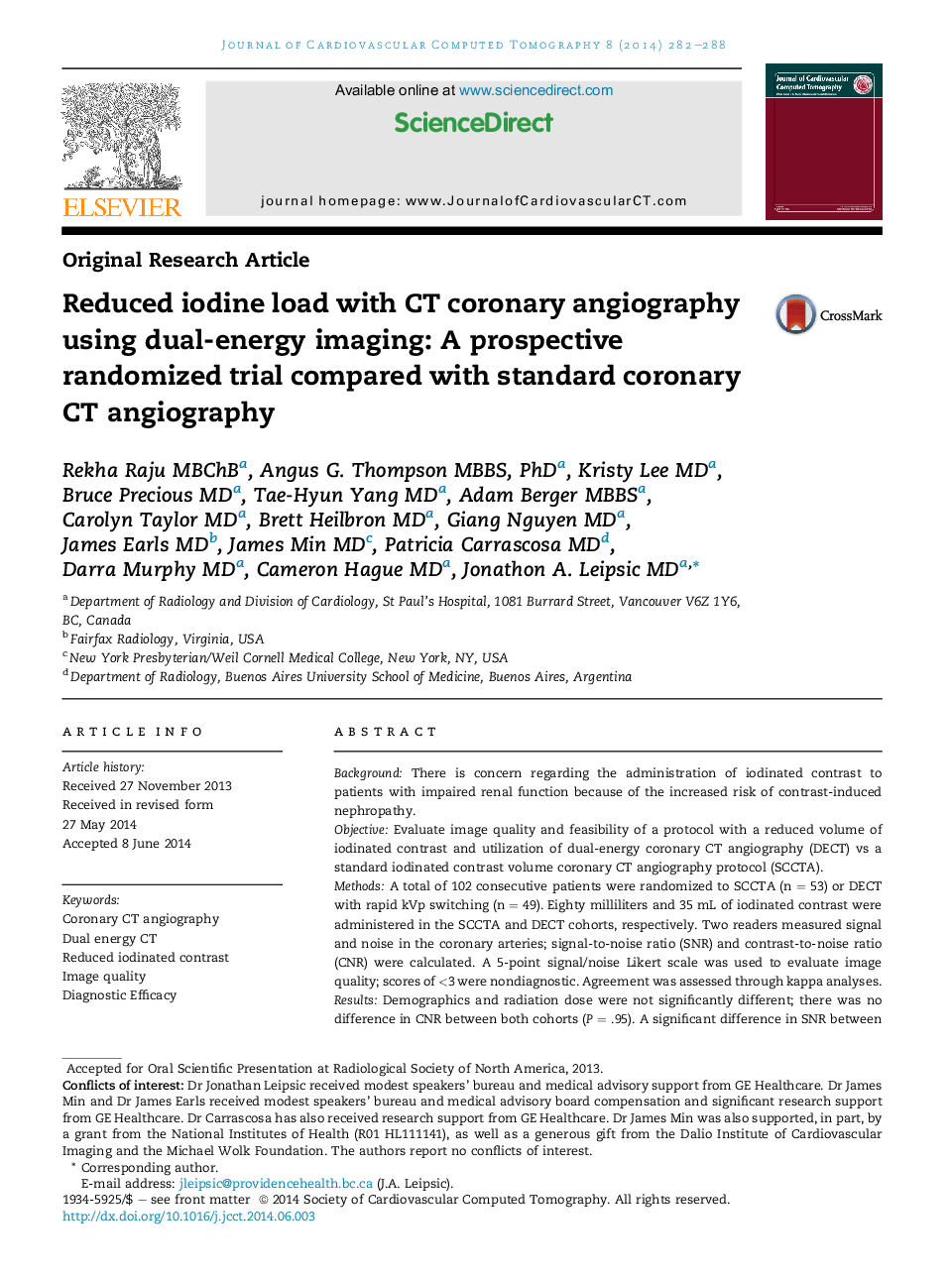| Article ID | Journal | Published Year | Pages | File Type |
|---|---|---|---|---|
| 2964426 | Journal of Cardiovascular Computed Tomography | 2014 | 7 Pages |
BackgroundThere is concern regarding the administration of iodinated contrast to patients with impaired renal function because of the increased risk of contrast-induced nephropathy.ObjectiveEvaluate image quality and feasibility of a protocol with a reduced volume of iodinated contrast and utilization of dual-energy coronary CT angiography (DECT) vs a standard iodinated contrast volume coronary CT angiography protocol (SCCTA).MethodsA total of 102 consecutive patients were randomized to SCCTA (n = 53) or DECT with rapid kVp switching (n = 49). Eighty milliliters and 35 mL of iodinated contrast were administered in the SCCTA and DECT cohorts, respectively. Two readers measured signal and noise in the coronary arteries; signal-to-noise ratio (SNR) and contrast-to-noise ratio (CNR) were calculated. A 5-point signal/noise Likert scale was used to evaluate image quality; scores of <3 were nondiagnostic. Agreement was assessed through kappa analyses.ResultsDemographics and radiation dose were not significantly different; there was no difference in CNR between both cohorts (P = .95). A significant difference in SNR between the groups (P = .02) lost significance (P = .13) when adjusted for body mass index. The median Likert score was inferior for DECT for reader 1 (3.6 ± 0.6 vs 4.3 ± 0.6; P < .001) but not reader 2 (4.1 ± 0.6 vs 4.3 ± 0.5; P = .06). Agreement in diagnostic interpretability in the DECT and SCCTA groups was 91% (95% confidence interval, 86%–100%) and 96% (95% confidence interval, 90%–100%), respectively.ConclusionDECT resulted in inferior image quality scores but demonstrated comparable SNR, CNR, and rate of diagnostic interpretability without a radiation dose penalty while allowing for >50% reduction in contrast volume compared with SCCTA.
